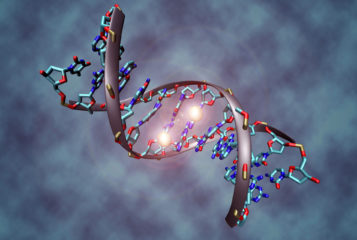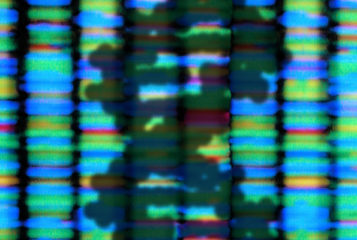The mechanism by which environmental factors are transferred from sperm to embryo has been identified.
Researchers from Canada's McGill University have discovered how epigenetic changes in sperm can transmit information to the embryo by non-DNA means. These alterations to the gene expression in sperm were caused by dietary changes, researchers found. Previous research has shown that DNA methylation in certain regions of DNA in sperm affected gene expression, and could possibly be used to predict autism in children (see BioNews 1079). This growing study area means that new avenues of disease prevention could be explored, specifically in relation to the transmission of environmental conditions and paternal experience.
'A non-DNA based means by which sperm remember a father's environment (diet) and transmit that information to the embryo... presents a major shift from what is known about heritability and disease from being solely DNA-based, to one that now includes sperm proteins.' said Dr Sarah Kimmins, the senior author on the study published in Development Cell.
It is well known DNA passed on by parents is a key determinant of health and disease in their offspring. However, the way those genes are expressed is not as fixed as first thought. The McGill researchers studied this by feeding male mice a folate-deficient diet and following the effects this had on molecules in proteins associated with DNA. The researchers found that the modified diet changed particular molecules called methyl groups. These molecules are associated with histone proteins that play an important role in packaging DNA into cells. It was discovered that these changes were passed on at fertilisation and remained throughout the development of the embryo, resulting in birth defects of the spine and skull.
'No one has been able to track how those heritable environmental signatures are transmitted from the sperm to the embryo before.' Ariane Lismer added, the first author of the paper.
Identification of the mechanism that is immediately altered by environmental factors such as diet, lifestyle or the impact of stress to parents may lead to the discovery of new methods for disease prevention. Dr Kimmins' research group is already looking to establish whether 'these harmful changes induced in the sperm proteins (histones) can be repaired' and has stated 'We have exciting new work that suggests that this is indeed the case.'
Future research investigating how information is passed from sperm to embryos will continue to shed new light on how the lifestyle of parents prior to conception is equally important for the health of their future offspring.






Leave a Reply
You must be logged in to post a comment.